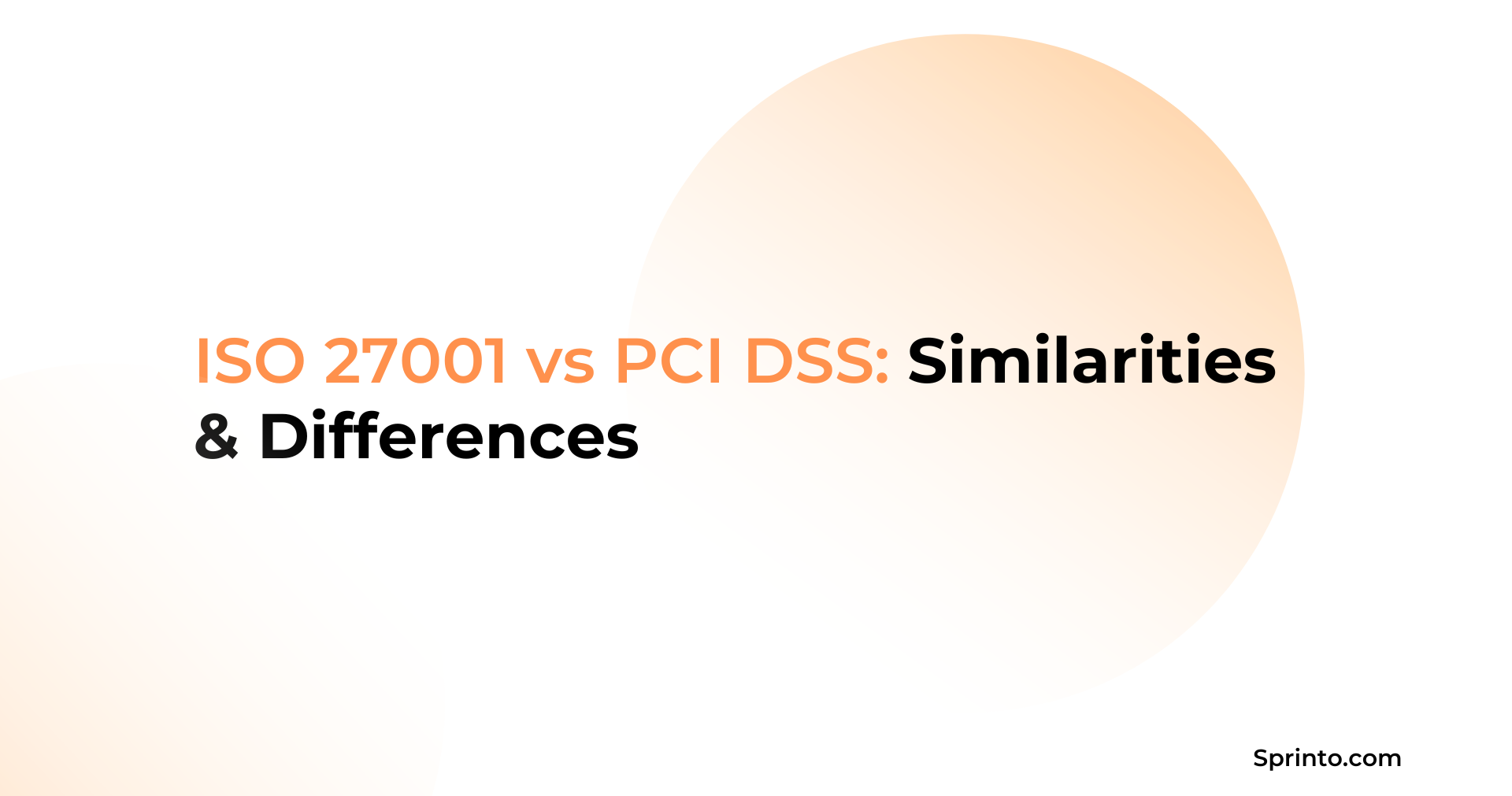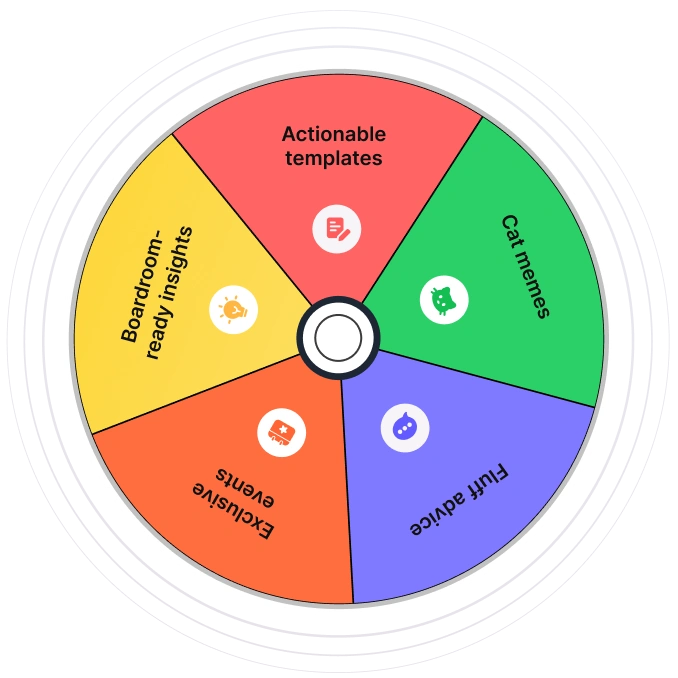Companies handling sensitive customer data and payment information are under pressure to comply with not just one, but multiple security frameworks. It’s no longer a question of if you’ll need to prove compliance, but how many certifications you’ll be asked to show.
One framework wants proof that your entire business manages information risk; the other demands airtight controls for every credit-card swipe. Handling both is no cakewalk, as each comes with its own evidence trail and deadlines.
Read on and you’ll learn where ISO 27001 ends and PCI DSS begins, see the overlap you can reuse, and pick up practical steps to meet both standards without much fuss.
| TL;DR ISO 27001 creates an organization-wide security management system while PCI DSS locks down cardholder data with 12 prescriptive requirements. Many PCI controls match ISO 27001, so a shared evidence library can cut audit preparation time and cost. Automating control mapping and simplifying auditor coordination makes dual compliance manageable even for small teams. |
What is ISO 27001?
ISO/IEC 27001 is the globally recognised standard that aids companies in implementing, maintaining, and improving an Information Security Management System (ISMS). It’s published by the International Organization for Standardization (ISO) and the International Electrotechnical Commission (IEC).
The latest version of ISO 27001 was published in 2022 and lays out a risk-based, lifecycle approach that helps you protect data, reassure customers, and meet regulatory demands, without dictating any single technology stack.
- In ISO 27001, you define the business units, locations, and data flows the ISMS must protect, then set security objectives.
- The standard follows Plan-Do-Check-Act (PDCA): plan your controls, implement them, monitor performance, and refine continuously.
- There are 93 Annex A reference controls grouped into four themes (Organizational, People, Physical, Technological) that cover everything from access governance to supplier management.
- Systematic identification, analysis, evaluation, and treatment of information-security risks are central to ISO 27001.
In practice, ISO 27001 gives you a common language to organize teams, prove due diligence to customers, and stay resilient as threats grow.
Download the ISO 27001 control list
What is PCI DSS?
The Payment Card Industry Data Security Standard (PCI DSS) is a framework designed to protect credit and debit-card information from unauthorized access.
It was created by the PCI Security Standards Council, a collaborative effort of major payment card brands such as Visa, Mastercard, American Express, Discover, and JCB. The current PCI DSS v4.0 edition (published March 2022, mandatory from 31 March 2025) applies to any organization that stores, processes, or transmits cardholder data.
Unlike a voluntary best practice, PCI DSS controls are mandatory: acquirers and card brands can levy hefty fines or even cut off payment services if you fall out of line.
- The standard identifies and minimizes your cardholder-data environment (CDE) before controls are applied.
- There are 12 core requirements, grouped under six security objectives, that cover secure networks, protection of account data, vulnerability management, strong access control, continuous monitoring, and governance.
- Version 4.0 allows risk-justified alternatives to prescriptive controls, provided you reach the same security outcome.
- Submit an Attestation of Compliance (AOC), perform quarterly ASV scans, run annual penetration tests, and keep evidence ready for banks and brands. You can use a PCI DSS compliance checklist to make this easier.
PCI DSS compliance is the best way you can prove to issuers and customers that disciplined, independently verified safeguards back every swipe, tap, or online checkout.
ISO 27001 vs. PCI DSS: Similarities and differences
Both frameworks revolve around sound security programs, but they have vast differences in the way they work, their enforcement, and scope. Before we get into the nitty-gritty, here’s what you need to know at a glance:
| Dimension | ISO 27001 | PCI DSS |
| Owner / Issuer | ISO and EEC | PCI Security Standards Council |
| Primary goal | Build, run, and improve an enterprise-wide ISMS | Protect cardholder data wherever it is stored, processed, or transmitted |
| Industry focus | Universal (any sector, any size) | Payments ecosystem: merchants, processors, service providers |
| Control structure | 93 reference controls in Annex A | 12 prescriptive requirements grouped under six security objectives |
| Approach | Risk-based, flexible; you choose and justify controls | Largely prescriptive, though v4.0 introduces a “customized approach” with risk justification |
| Certification | Independent audit certifies the ISMS (3-year cycle, annual surveillance) | Level-based validation: QSA audit for Level 1; self-assessment for lower levels |
| Enforcement | Market-driven; customers and regulators often require it | Contractual; card brands and acquiring banks can fine or terminate service |
| Penalties for non-compliance | Lost deals, higher cyber-insurance, regulatory scrutiny | Fines up to $500k per incident; potential loss of ability to process cards |
| Transition timeline | ISO/IEC 27001:2022; three-year migration deadline ends Oct 31 2025 | PCI DSS 4.0; fully mandatory starting Mar 31 2025 |
| Best for | Holistic information-security maturity across the enterprise | Organizations that handle payment cards and need to keep them secure |
ISO 27001 vs. PCI DSS: Governance and intent
The ISO 27001 certification grew out of British Standard BS 7799 and now serves as a universal standard for governing information risk. It revolves around the ISMS, that is, policies, procedures, and roles that concern every data flow, not just credit-card fields.
PCI DSS, by contrast, is a private-sector standard written by the payment networks. It zeroes in on the cardholder-data environment (CDE) and leaves the rest of your environment largely untouched unless it can connect to the CDE.
ISO 27001 vs. PCI DSS: Scope and risk treatment
With ISO 27001, you define the scope boundary and then run a formal risk assessment. High-risk scenarios determine your control selection, so two certified firms can look very different.
PCI DSS doesn’t work like ISO 27001 in terms of scope. If a system stores, processes, or transmits account data, it’s automatically in scope and all 12 requirements apply. Version 4.0 lets you suggest alternative safeguards, but only if you can prove they meet the same goal.
ISO 27001 vs. PCI DSS: Control depth and technical coverage
ISO 27001’s Annex A tells you what to do, not how to do it. It says things like “restrict access to information” or “secure the development lifecycle,” and leaves the details to your risk assessment.
PCI DSS is deeper in comparison. Requirement 3.5, for example, demands that cryptographic keys be stored in two or fewer locations, documented in a key-management program, and rotated at least annually. PCI DSS’s prescriptiveness accelerates implementation, but it can also force changes to your architecture that ISO 27001 would treat as optional risk treatments.
ISO 27001 vs. PCI DSS: Audit stages and effort
The two main stages of ISO 27001 implementation are the readiness review and the effectiveness audit. The former is concerned with policies, your SoA, and risk register, while the latter involves evidence sampling and control walk-throughs. After certification, you’ll go through a surveillance audit once a year, and a full recertification audit every three years.
For PCI DSS, you have levels:
- Level 1: Level 1 applies to merchants or service providers that process over 6 million transactions annually or are deemed high-risk. They must complete an annual onsite Report on Compliance (ROC) conducted by a Qualified Security Assessor (QSA), along with quarterly ASV scans and annual penetration tests.
- Level 2: Level 2 is for entities processing 1 to 6 million transactions per year. They are required to complete an annual Self-Assessment Questionnaire (SAQ) specific to their payment processing method and perform quarterly vulnerability scans by an Approved Scanning Vendor (ASV).
- Level 3: Level 3 includes merchants processing 20,000 to 1 million e-commerce transactions annually. These merchants must also complete an appropriate annual SAQ and undergo quarterly ASV scans to maintain compliance.
- Level 4: Level 4 covers merchants processing fewer than 20,000 e-commerce transactions or up to 1 million transactions from other channels annually. They must complete the relevant annual SAQ and conduct quarterly scans through an ASV to stay compliant.
The time hit mirrors those schedules: a midsize SaaS firm typically spends four to six weeks on an ISO 27001 surveillance visit but only one to two on a Level 2 SAQ, whereas a Level 1 ROC can eclipse ten weeks of concerted evidence gathering
ISO 27001 vs. PCI DSS: Costs
Certification costs vary a lot, but some patterns are there:
| Cost bucket | ISO 27001 | PCI DSS |
| Up-front audit | Stage 1 (ISMS documentation) and Stage 2 (Control implementation) certification audit: $30,000 to $60,000 | ROC for Level 1: $35,000 to $200,000SAQ for lower levels: $5,000 to $20,000 |
| Framework documents and tools | Standards purchase: $350; security stack gaps encourage additional tools | Network-security tools hardening: varies; typical $2,400/year for managed monitoring |
| Preparation and gap analysis | Optional gap analysis around $7,500 | Scope-reduction and readiness work folded into prep; cost varies with CDE size |
| Testing | Pen-testing and VA: $2,000 to $20,000 per cycle | Quarterly ASV scans: $200/IP/yearPen-testing (if in scope): $3,000 to $30,000 |
| Employee enablement | Security awareness: $25 per user or up to $15,000 per session | Security training: $20 to $30 per employee |
| Total range (traditional) | $50,000 to $200,000 | $5,000 to $20,000 (small) to $50,000 to $200,000 (large) |
As you can see, these are some hefty costs. Fortunately, there’s some relief. Sprinto is a compliance automation platform that automates scoping, evidence capture, policy templates, in-app training, and auditor coordination. By doing so, it cuts both frameworks’ direct spend and internal labor.
With Sprinto, you can get up to 60% savings on ISO 27001 audit costs and materially lower PCI DSS preparation hours by bundling MDM, security awareness, and continuous monitoring into the platform. This leaves penetration tests and ASV as your only major external line items.
When do you need both ISO 27001 and PCI DSS?
A single framework will never cover every business promise you make to customers and partners.
If you run a SaaS platform that handles card payments and hosts large volumes of non-payment data, like user profiles, telemetry, or client IP, dual compliance satisfying both ISO 27001 and PCI DSS is important.
ISO 27001 shows that your organization takes information security seriously, which customers expect to see in security questionnaires and vendor assessments. On the other hand, PCI DSS isn’t optional if you deal with cardholder data. It’s a strict requirement from the card networks. They cover two critical fronts: broad organizational security and airtight payment data protection.
So, what’s the takeaway?
- Do you need holistic security and broad customer trust? Start with ISO 27001, and then add PCI later if you process payment card information.
- Are you a payment service provider under card-brand pressure? Implement PCI first; expand into ISO 27001 to cover SaaS back-office systems, HR data, and intellectual property.
- Are you scaling fintech? Run both tracks in parallel. Use unified control mapping within a Sprinto to avoid duplicate testing.
Map common controls ISO 27001 and PCI DSS within one platform
Implementing and maintaining both ISO 27001 and PCI DSS doubles the effort that goes into collecting evidence, updating policies, and coordinating with auditors. Sprinto cuts that workload by bringing the two standards into one automated workflow.
Sprinto’s ready-made policies, auditor-verified checklists, and step-by-step guidance shrink ISO 27001 gap assessments from weeks to a few hours. Its PCI module includes vetted scanning vendors and a qualified QSA network, which helps teams gather ROC evidence easily.
When you need to meet both standards, Sprinto’s common control mapping eliminates redundant work by aligning overlapping requirements. This saves bandwidth, cuts audit prep time, and reduces compliance costs. Teams don’t have to repeat efforts: one control, one set of evidence, used across both frameworks.
Book a demo to see how Sprinto removes the complexity from ISO 27001 and PCI DSS.

Frequently asked questions
1. What is the difference between ISO 27001 and PCI DSS?
ISO 27001 is a voluntary, risk-based framework that helps you build and run an enterprise-wide ISMS. You set the scope, perform a risk assessment, and select from 93 high-level controls in Annex A.
PCI DSS, by contrast, is a contractual mandate from the card brands. It applies only to systems that store, process, or transmit cardholder data and enforces 12 prescriptive requirements.
2. What is the difference between ISO 27001 and GDPR?
ISO 27001 is a security standard: it tells you how to design, implement, and continually improve controls that protect any kind of information.
GDPR is a privacy regulation that grants data-subject rights, sets lawful-processing rules, and imposes steep fines for non-compliance. ISO 27001 certification is optional but widely recognized, but GDPR compliance is mandatory for any organization that handles EU residents’ personal data, regardless of location.
3. Is ISO 27001 outdated?
No. The standard was fully refreshed as ISO/IEC 27001:2022, published in October 2022. Certification bodies stopped issuing the older 2013 version on 30 April 2024, and all remaining ISO 27001:2013 certificates expire on 30 October 2025.
The 2022 revision modernizes terminology, condenses the control set from 114 to 93, introduces attributes for easier mapping, and tightens focus on threat intelligence, cloud services, and web-application security.
4. How does ISO 27001 compare to SOC 2?
ISO 27001 is international, certifiable, and prescriptive about running an ISMS. SOC 2 is an American attestation standard in which a CPA firm opines on how well your existing controls satisfy the Trust Services Criteria (security, availability, confidentiality, processing integrity, privacy).
Because SOC 2 focuses on service-provider controls demanded by U.S. enterprise buyers, many cloud or SaaS companies pursue both: ISO 27001 for global credibility and SOC 2 for North American sales cycles.
5. If my company is PCI DSS compliant, do I still need ISO 27001?
PCI DSS proves that your cardholder data environment is locked down, but it leaves the rest of your business, like HR files, intellectual property, and customer analytics, outside its scope.
ISO 27001 extends governance across every asset and department and gives you a single risk register, unified policies, and a management-system lens. The two frameworks share enough evidence to make dual compliance achievable without doubling the workload.
Pansy
Pansy is an ISC2 Certified in Cybersecurity content marketer with a background in Computer Science engineering. Lately, she has been exploring the world of marketing through the lens of GRC (Governance, risk & compliance) with Sprinto. When she’s not working, she’s either deeply engrossed in political fiction or honing her culinary skills. You may also find her sunbathing on a beach or hiking through a dense forest.
Explore more ISO 27001 articles
ISO 27001 Overview & Requirements
ISO 27001 vs Other Frameworks
ISO 27001 Audit & Certification Process
ISO 27001 Management & Assessment
ISO 27001 Implementation & Automation
ISO 27001 Industry-Specific Applications
research & insights curated to help you earn a seat at the table.









